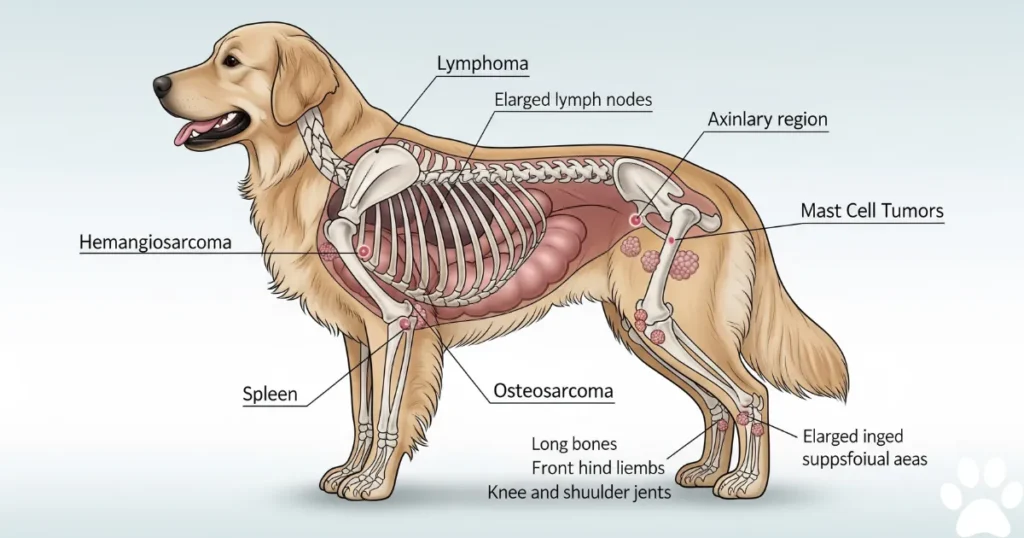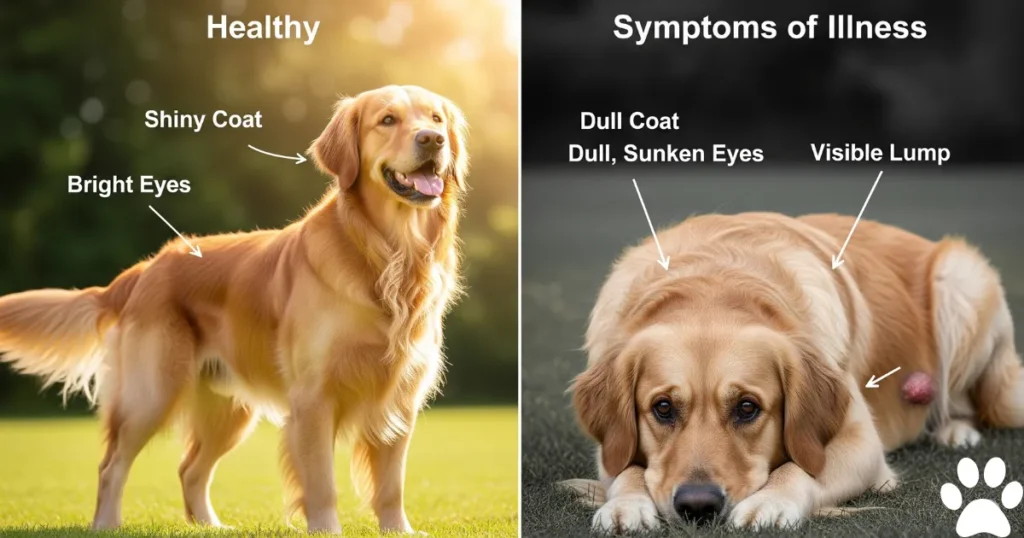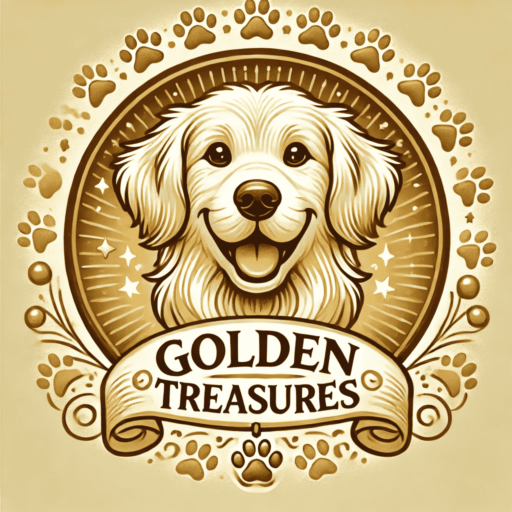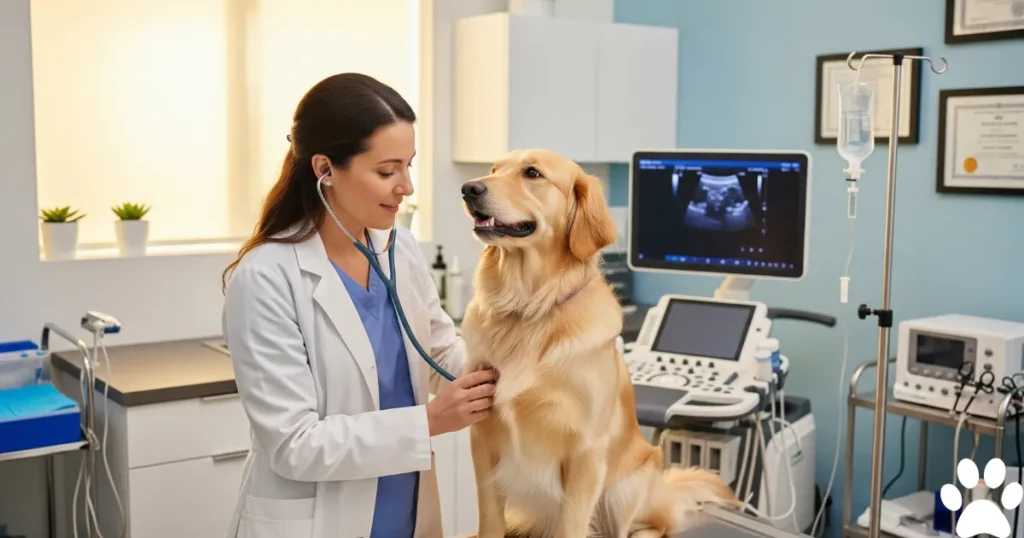Cancer in canines represents one of the most devastating health challenges facing dog owners today, particularly those with Golden Retrievers. Understanding canine cancer symptoms can mean the difference between successful treatment and heartbreak for families who consider their dogs beloved family members. Golden Retrievers face significantly higher cancer rates than many other breeds, making knowledge about cancer recognition absolutely critical for their owners.
This comprehensive guide explores everything you need to know about cancer in canines, from early detection strategies to understanding complex canine cancer symptoms that might otherwise go unnoticed. Whether you’re a new Golden Retriever owner or have shared your life with this magnificent breed for years, this information could save your dog’s life through early recognition and prompt veterinary intervention.
Contents
- 1 Understanding Cancer in Canines: The Golden Retriever Reality
- 2 Common Cancer Types Affecting Golden Retrievers
- 3 Recognizing Early Canine Cancer Symptoms
- 4 Physical Signs and Symptoms to Monitor
- 5 Age-Related Cancer Risk Factors
- 6 Environmental and Lifestyle Factors
- 7 Nutritional Support and Prevention Strategies
- 8 Treatment Options and Prognosis Considerations
- 9 Palliative Care and Quality of Life Management
- 10 Advanced Diagnostic Techniques
- 11 Emergency Warning Signs Requiring Immediate Attention
- 12 Long-term Monitoring and Follow-up Care
- 12.1 What are the most common canine cancer symptoms in Golden Retrievers?
- 12.2 How early can canine cancer symptoms appear in Golden Retrievers?
- 12.3 Can diet prevent cancer in canines?
- 12.4 How quickly do canine cancer symptoms progress?
- 12.5 Are certain Golden Retriever bloodlines more prone to developing canine cancer symptoms?
- 12.6 What should I do if I notice potential canine cancer symptoms in my Golden Retriever?
- 12.7 How expensive is treating cancer in canines?
- 12.8 Can Golden Retrievers live normal lives after cancer treatment?
- 13 Final Thoughts
Understanding Cancer in Canines: The Golden Retriever Reality
Cancer in canines affects millions of dogs worldwide, but Golden Retrievers face particularly sobering statistics that every owner should understand. Research indicates that approximately 60% of Golden Retrievers will develop some form of cancer during their lifetime, making this breed one of the most cancer-prone dogs in the world. This genetic predisposition stems from decades of selective breeding that, while creating the loving temperament and beautiful appearance we adore, has unfortunately concentrated certain cancer-causing genes within the breed.
The prevalence of cancer in canines, especially Golden Retrievers, has increased dramatically over the past several decades. Veterinary oncologists attribute this rise to multiple factors, including improved diagnostic capabilities that detect cancers previously missed, longer lifespans allowing more time for cancer development, environmental toxin exposure, and genetic factors concentrated through breeding practices. Understanding these realities helps Golden Retriever owners approach their dog’s health with appropriate vigilance and preparation.
Canine cancer symptoms in Golden Retrievers often manifest differently than in humans, making recognition challenging for even experienced dog owners. Dogs instinctively hide pain and illness, an evolutionary survival mechanism that unfortunately complicates early cancer detection. Golden Retrievers, with their eager-to-please personalities, may continue their normal activities despite feeling unwell, masking important canine cancer symptoms until diseases reach advanced stages.
Common Cancer Types Affecting Golden Retrievers
Golden Retrievers develop several specific cancer types more frequently than other breeds, each presenting unique canine cancer symptoms that owners must learn to recognize. Hemangiosarcoma, often called the “silent killer,” affects blood vessels and commonly develops in the spleen, heart, or liver. This aggressive cancer rarely shows obvious canine cancer symptoms until it reaches advanced stages, making it particularly dangerous for Golden Retrievers.
Lymphoma represents another significant concern for Golden Retriever owners, though it often responds well to treatment when caught early. This cancer in canines affects the lymphatic system and typically presents with swollen lymph nodes that owners can feel under their dog’s jaw, in the armpits, or around the groin area. Unlike some other cancers, lymphoma often produces noticeable canine cancer symptoms that alert owners to seek veterinary care before the disease becomes terminal.
Osteosarcoma, or bone cancer, primarily affects the long bones in Golden Retrievers’ legs and causes significant pain that manifests as persistent limping or reluctance to exercise. This cancer in canines typically strikes large breed dogs like Golden Retrievers between the ages of seven and ten years. Understanding the final stages of osteosarcoma in dogs helps owners make informed decisions about their pet’s comfort and treatment options during difficult times.
Mast cell tumors represent the most common skin cancer affecting Golden Retrievers and can appear anywhere on the body as raised bumps, flat patches, or ulcerated sores. These tumors demonstrate how canine cancer symptoms can vary dramatically even within the same cancer type, making professional evaluation essential for any new skin growth or change in existing moles or bumps.

Recognizing Early Canine Cancer Symptoms
Early detection of canine cancer symptoms dramatically improves treatment outcomes and extends the quality of life for Golden Retrievers facing cancer diagnoses. Owners should familiarize themselves with subtle changes that might indicate developing cancer in canines before obvious symptoms emerge. Weight loss without dietary changes often represents one of the earliest canine cancer symptoms, though it may be gradual and easy to overlook during regular daily interactions.
Changes in appetite patterns frequently signal underlying health problems in Golden Retrievers, including various forms of cancer in canines. Dogs experiencing cancer may show decreased interest in their regular food, difficulty swallowing, or changes in eating behaviors such as dropping food while chewing. These canine cancer symptoms can indicate oral cancers, gastrointestinal tumors, or systemic diseases affecting multiple organ systems.
Behavioral modifications often accompany physical canine cancer symptoms as Golden Retrievers experience pain, discomfort, or general malaise associated with developing cancers. Dogs may become less social, sleep more frequently, show reduced interest in previously enjoyed activities, or display subtle changes in their interaction patterns with family members. These behavioral canine cancer symptoms require careful observation since Golden Retrievers typically maintain their friendly demeanor even when feeling unwell.
Respiratory changes represent critical canine cancer symptoms that require immediate veterinary attention, particularly when they appear suddenly or worsen progressively. Golden Retrievers with lung cancer, heart tumors, or cancers affecting the chest cavity may experience difficulty breathing, persistent coughing, or unusual fatigue during normal activities. Recognizing these canine cancer symptoms early can make a significant difference in treatment options and outcomes.

Physical Signs and Symptoms to Monitor
Understanding what cancer in canines looks like physically empowers Golden Retriever owners to detect problems early when treatment options remain most effective. Lumps and bumps represent the most obvious canine cancer symptoms that owners can identify through regular hands-on examinations of their dogs. However, not all lumps indicate cancer in canines, and some cancers develop without creating easily detectable external growths.
Skin changes beyond obvious lumps can indicate various forms of cancer in canines affecting Golden Retrievers. Unusual sores that don’t heal within normal timeframes, changes in the color or texture of existing moles, or areas where hair loss occurs without apparent cause may represent canine cancer symptoms requiring professional evaluation. Cancer sores on dogs can appear anywhere on the body and may initially resemble minor injuries or infections.
Swelling in specific body areas often indicates canine cancer symptoms related to lymphoma or other cancers affecting the lymphatic system. Golden Retriever owners should regularly feel for enlarged lymph nodes under their dog’s jaw, in the armpit areas, and around the groin region. These canine cancer symptoms may appear gradually, making regular monitoring essential for early detection.
Gastrointestinal canine cancer symptoms can manifest as persistent vomiting, diarrhea, changes in bowel movement consistency or frequency, or visible blood in stool or vomit. These symptoms might indicate various forms of cancer in canines affecting the digestive system, though they can also result from less serious conditions requiring different treatments.

Age-Related Cancer Risk Factors
Age represents the single most significant risk factor for developing cancer in canines, with Golden Retrievers facing increased susceptibility as they enter their senior years. Most canine cancer symptoms appear in dogs over seven years old, though younger Golden Retrievers can develop certain cancer types, including lymphoma and some bone cancers. Understanding age-related risks helps owners adjust their monitoring strategies and veterinary care schedules accordingly.
Middle-aged Golden Retrievers between four and seven years old face moderate cancer risks that require increased vigilance for canine cancer symptoms without causing excessive anxiety about every minor health change. This age group benefits from regular veterinary examinations every six months rather than annual visits, allowing for earlier detection of developing cancer in canines before symptoms become obvious to owners.
Senior Golden Retrievers over eight years old require the most intensive monitoring for canine cancer symptoms due to their significantly elevated cancer risk. These dogs should receive comprehensive veterinary examinations every three to four months, including blood work and physical examinations specifically designed to detect early signs of cancer in canines before clinical symptoms emerge.
Genetic factors influencing cancer in canines become more apparent as Golden Retrievers age, with family history playing an increasingly important role in individual risk assessment. Dogs from bloodlines with high cancer incidences may develop canine cancer symptoms earlier than those from healthier genetic backgrounds, making family health history valuable information for veterinary teams developing monitoring and prevention strategies.
Environmental and Lifestyle Factors
Environmental exposures significantly influence cancer in canines development, particularly for Golden Retrievers who spend considerable time outdoors and may encounter various carcinogenic substances. Chemical lawn treatments, pesticides, herbicides, and industrial pollutants can increase cancer risks and potentially trigger canine cancer symptoms in genetically susceptible dogs. Minimizing exposure to these substances represents an important prevention strategy for responsible Golden Retriever owners.
Indoor environmental factors also contribute to cancer in canines through exposure to household chemicals, cigarette smoke, and other airborne toxins. Golden Retrievers living in homes where people smoke face increased risks for developing respiratory cancers and may show canine cancer symptoms related to lung or throat tumors. Creating clean, toxin-free living environments supports overall health and may reduce cancer development risks.
Dietary factors play complex roles in cancer in canines development, with both nutritional deficiencies and excesses potentially contributing to increased cancer risks. Golden Retrievers fed high-quality diets rich in antioxidants and omega-3 fatty acids may experience reduced cancer risks. At the same time, those consuming poor-quality commercial foods with artificial preservatives and chemicals face elevated risks for developing various canine cancer symptoms.
Exercise and weight management significantly impact cancer in canines development, with obese Golden Retrievers facing higher cancer risks than dogs maintained at healthy weights. Regular physical activity supports immune system function and helps prevent obesity-related health problems that may contribute to cancer development. However, owners should monitor exercising dogs for signs of unusual fatigue or other canine cancer symptoms that might indicate developing health problems.
Nutritional Support and Prevention Strategies
Proper nutrition plays a crucial role in preventing cancer in canines and supporting dogs already diagnosed with various cancer types. Golden Retrievers benefit from diets rich in high-quality proteins, antioxidants, and anti-inflammatory compounds that support immune system function and potentially reduce cancer development risks. Understanding how nutrition impacts canine cancer symptoms helps owners make informed dietary decisions for their dogs throughout their lives.
Antioxidant-rich foods, including blueberries, sweet potatoes, and leafy green vegetables, provide compounds that may help prevent cancer in canines by neutralizing harmful free radicals that damage cellular DNA. These foods can be incorporated into Golden Retrievers’ diets as healthy treats or meal additions, though owners should consult with veterinary nutritionists to ensure balanced nutrition and appropriate portion sizes.
Omega-3 fatty acids found in fish oil and certain plant sources demonstrate anti-inflammatory properties that may help prevent cancer in canines and support dogs experiencing canine cancer symptoms. These essential fatty acids support immune system function and may help reduce inflammation associated with cancer development and treatment. Quality fish oil supplements designed for dogs provide convenient ways to ensure adequate omega-3 intake.
Foods to avoid include processed commercial dog foods containing artificial preservatives, colors, and chemicals that may increase cancer in canines risks. BHA, BHT, and ethoxyquin represent particular concerns due to their potential carcinogenic properties. Golden Retriever owners should read ingredient labels carefully and choose natural, minimally processed foods whenever possible to reduce their dogs’ exposure to potentially harmful substances.

Treatment Options and Prognosis Considerations
Treatment approaches for cancer in canines vary significantly depending on cancer type, stage at diagnosis, and the individual Golden Retriever’s overall health status. Early detection of canine cancer symptoms provides more treatment options and generally improves prognosis outcomes compared to cancers discovered in advanced stages. Understanding available treatments helps owners make informed decisions about their dogs’ care when facing cancer diagnoses.
Surgical intervention remains the primary treatment for many forms of cancer in canines, particularly when tumors can be completely removed with clean margins. Golden Retrievers generally tolerate surgical procedures well, though recovery times and outcomes depend on factors including the dog’s age, overall health, cancer location, and extent of surgical intervention required. Dog tumor removal often provides the best outcomes when performed before cancer spreads to surrounding tissues or distant organs.
Chemotherapy protocols for cancer in canines differ significantly from human treatments and generally produce fewer severe side effects in dogs. Many Golden Retrievers receiving chemotherapy maintain a good quality of life throughout their treatment periods, though individual responses vary based on cancer type and treatment protocols used. Understanding chemotherapy’s role in treating canine cancer symptoms helps owners make decisions aligned with their dogs’ best interests and their families’ capabilities.
Radiation therapy represents another important treatment option for certain types of cancer in canines, particularly when surgical removal isn’t possible or practical. This treatment modality requires specialized veterinary facilities and multiple treatment sessions over several weeks. Dogs receiving radiation therapy for canine cancer symptoms generally tolerate the procedure well, though some may experience temporary skin irritation at treatment sites.

Palliative Care and Quality of Life Management
When curative treatments aren’t possible or appropriate, palliative care focuses on managing canine cancer symptoms to maintain the best possible quality of life for Golden Retrievers facing terminal diagnoses. This approach emphasizes comfort, pain control, and emotional support for both dogs and their families during difficult transitions. Understanding palliative care options helps families navigate end-of-life decisions with greater confidence and peace.
Pain management represents a critical component of palliative care for Golden Retrievers experiencing canine cancer symptoms. Modern veterinary medicine offers numerous pain control options, including medications, acupuncture, massage therapy, and other complementary treatments that can significantly improve comfort levels. Regular assessment of pain levels and adjustment of management strategies ensures dogs maintain dignity and comfort throughout their remaining time.
Nutritional support becomes increasingly important as cancer in canines progresses and affects appetite, digestion, and overall nutritional status. Golden Retrievers may require specially formulated diets, appetite stimulants, or feeding assistance to maintain adequate nutrition during advanced cancer stages. Veterinary nutritionists can provide valuable guidance for supporting dogs experiencing canine cancer symptoms that affect their ability to eat normally.
Emotional support for both Golden Retrievers and their families plays an essential role in palliative care approaches. Dogs benefit from maintaining familiar routines, spending quality time with loved ones, and continuing enjoyable activities within their physical capabilities. Families often find comfort in creating special memories, providing extra attention, and ensuring their dogs feel loved and secure during challenging times.

Advanced Diagnostic Techniques
Modern veterinary medicine offers sophisticated diagnostic tools for detecting cancer in canines before obvious canine cancer symptoms become apparent to owners. Blood tests can identify tumor markers, abnormal cell counts, and organ function changes that suggest developing cancers in Golden Retrievers. Regular blood work screening may detect cancer in canines months before physical symptoms emerge, providing earlier intervention opportunities.
Imaging studies, including X-rays, ultrasounds, CT scans, and MRI examinations, provide detailed views of internal organs and can identify tumors not detectable through physical examinations. These diagnostic tools help veterinarians locate cancer in canines, determine the extent of disease spread, and plan appropriate treatment strategies. Golden Retriever owners should understand that these advanced diagnostics significantly improve cancer detection capabilities compared to basic physical examinations alone.
Biopsy procedures provide definitive diagnoses for suspected cancer in canines by allowing veterinary pathologists to examine actual tissue samples under microscopes. Fine needle aspirations offer minimally invasive ways to sample suspicious lumps, while surgical biopsies provide more comprehensive tissue samples for detailed analysis. Understanding biopsy procedures helps owners make informed decisions about diagnostic approaches when canine cancer symptoms suggest possible cancer development.
Genetic testing for cancer predisposition genes offers Golden Retriever owners insights into their dogs’ cancer risks and may guide prevention strategies and monitoring schedules. While genetic tests can not predict exactly which dogs will develop cancer in canines, they provide valuable information for customizing health care approaches based on individual risk factors.
Emergency Warning Signs Requiring Immediate Attention
Certain canine cancer symptoms require emergency veterinary care due to their potential to become life-threatening within hours or days. Golden Retriever owners should familiarize themselves with these critical warning signs to ensure prompt medical intervention when necessary. Sudden weakness, collapse, or difficulty breathing may indicate signs dog dying from hemangiosarcoma or other rapidly progressing cancers requiring immediate emergency treatment.
Severe bleeding from any body location represents a medical emergency that may indicate cancer in canines affecting blood vessels or organs with rich blood supplies. Golden Retrievers experiencing significant bleeding should receive immediate veterinary attention, as delays can result in life-threatening blood loss or shock. Understanding these emergency canine cancer symptoms can save lives through rapid intervention.
Sudden onset of severe pain, inability to urinate or defecate, persistent vomiting, or dramatic behavior changes may indicate cancer in canines complications requiring emergency treatment. These canine cancer symptoms can develop rapidly and may represent medical emergencies that can not wait for regular veterinary appointments. Having emergency veterinary contact information readily available helps ensure prompt care during crises.
Seizures, difficulty swallowing, or sudden paralysis may indicate cancer in canines affecting the nervous system and require immediate medical evaluation. These canine cancer symptoms can worsen rapidly without appropriate treatment and may become irreversible if intervention is delayed. Golden Retriever owners should never hesitate to seek emergency care when observing these serious neurological symptoms.
Long-term Monitoring and Follow-up Care
Golden Retrievers with cancer histories require lifelong monitoring for recurrence and development of new canine cancer symptoms. Follow-up care schedules vary depending on cancer type, treatment received, and individual risk factors, but typically involve more frequent veterinary examinations and diagnostic testing than healthy dogs require. Understanding long-term monitoring needs helps owners maintain appropriate vigilance without becoming overly anxious about every minor health change.
Recurrence monitoring focuses on detecting cancer in canines returning to original sites or developing in new locations. This process typically involves regular physical examinations, blood work, and imaging studies designed to identify cancer recurrence before obvious canine cancer symptoms appear. Early detection of cancer recurrence often provides additional treatment options compared to cases where recurrence is identified only after symptoms become apparent.
Quality of life assessments become increasingly important for Golden Retrievers with cancer histories, helping owners and veterinary teams make decisions about continued monitoring versus transitioning to comfort care approaches. These assessments consider factors including appetite, activity levels, social interaction, pain levels, and overall enjoyment of life. Regular evaluation helps ensure dogs maintain an acceptable quality of life throughout their cancer journeys.
Secondary cancer development represents another concern for Golden Retrievers with cancer histories, as some dogs develop multiple primary cancers throughout their lifetimes. Monitoring for new canine cancer symptoms requires ongoing vigilance and regular veterinary care to detect different cancer types that may develop months or years after initial cancer treatments.
What are the most common canine cancer symptoms in Golden Retrievers?
The most common canine cancer symptoms in Golden Retrievers include visible lumps or bumps, unexplained weight loss, changes in appetite, persistent fatigue, difficulty breathing, and swollen lymph nodes. Cancer in canines often presents subtly initially, so owners should monitor for gradual changes in behavior, eating patterns, or physical appearance that persist beyond a few days.
How early can canine cancer symptoms appear in Golden Retrievers?
Canine cancer symptoms can appear at any age, though most Golden Retrievers develop cancer in canines after age seven. However, aggressive cancers like lymphoma can affect younger dogs, sometimes as early as two or three years old. Early symptoms may be very subtle and easily overlooked, making regular veterinary checkups essential for early detection.
Can diet prevent cancer in canines?
While diet can not completely prevent cancer in canines, proper nutrition significantly reduces risk factors. High-quality diets rich in antioxidants, omega-3 fatty acids, and natural ingredients support immune system function. Avoiding processed foods with artificial preservatives and maintaining a healthy weight through proper nutrition may help reduce canine cancer symptoms development risk.
How quickly do canine cancer symptoms progress?
The progression of canine cancer symptoms varies dramatically depending on cancer type. Aggressive cancers like hemangiosarcoma can cause cancer in canines to progress from undetectable to life-threatening within weeks. At the same time, slow-growing tumors may take months or years to produce noticeable symptoms. Any persistent changes warrant veterinary evaluation regardless of progression speed.
Are certain Golden Retriever bloodlines more prone to developing canine cancer symptoms?
Yes, genetics significantly influence cancer in canines susceptibility in Golden Retrievers. Some bloodlines have higher cancer incidences due to concentrated cancer predisposition genes. Responsible breeders conduct health screening and maintain detailed health records to identify and reduce canine cancer symptoms in their breeding programs.
What should I do if I notice potential canine cancer symptoms in my Golden Retriever?
If you observe possible canine cancer symptoms, schedule a veterinary appointment immediately. Document your observations, including photographs of visible changes, notes about behavior modifications, and timelines of symptom development. Early professional evaluation of suspected cancer in canines dramatically improves treatment outcomes and prognosis.
How expensive is treating cancer in canines?
Treatment costs for cancer in canines vary widely based on cancer type, stage, and chosen treatments. Basic diagnostic workups typically cost $500-2000, while comprehensive treatment, including surgery, chemotherapy, or radiation, can range from $3000-15000 or more. Pet insurance and payment plans may help manage expenses associated with treating canine cancer symptoms.
Can Golden Retrievers live normal lives after cancer treatment?
Many Golden Retrievers successfully treated for cancer in canines return to normal, happy lives with appropriate follow-up care. Treatment success depends on cancer type, stage at diagnosis, treatment response, and individual dog factors. Dogs with certain cancer types, like lymphoma, often achieve long-term remission and maintain excellent quality of life throughout and after treatment.
Final Thoughts
Understanding cancer in canines and recognizing canine cancer symptoms represents one of the most important responsibilities of Golden Retriever ownership. The sobering reality that up to 60% of Golden Retrievers will face cancer during their lifetimes makes this knowledge potentially life-saving for your beloved companion. However, armed with the comprehensive information provided in this guide, you now possess the tools necessary to be your dog’s most effective health advocate.
Early detection remains your most powerful weapon against cancer in canines. By conducting monthly physical examinations, maintaining regular veterinary checkups, and staying alert to subtle changes in your Golden Retriever’s behavior or physical condition, you significantly increase the chances of catching canine cancer symptoms when treatment options remain most effective. Remember that many canine cancer symptoms appear gradually and may initially seem like minor age-related changes, making consistent monitoring essential throughout your dog’s life.
The advances in veterinary oncology provide hope for Golden Retrievers facing cancer diagnoses. Modern treatments, including surgery, chemotherapy, and radiation therapy, offer excellent outcomes for many cancer types when detected early. Even dogs with more challenging diagnoses can often maintain quality of life through appropriate palliative care approaches that emphasize comfort and dignity during their remaining time.
Prevention strategies, including proper nutrition, environmental toxin avoidance, regular exercise, and weight management, may help reduce your Golden Retriever’s cancer risk. However, they can not eliminate it given the breed’s genetic predisposition. Focus on providing the healthiest possible lifestyle for your dog while remaining vigilant for canine cancer symptoms that require professional evaluation.
Your dedication to understanding cancer in canines and canine cancer symptoms demonstrates the deep love you have for your Golden Retriever. This commitment to their health and wellbeing, combined with strong veterinary partnerships and proactive monitoring, provides your dog with the best possible foundation for a long, healthy, and happy life. Whether you’re currently dealing with cancer concerns or preparing for future possibilities, the knowledge you’ve gained will serve you well throughout your journey together.
Dr. Nabeel A.
Hi, I’m Dr. Nabeel Akram – a farm management professional by trade and a passionate Golden Retriever enthusiast at heart. With years of experience in animal science and livestock care, I’ve built a career around understanding animals—how they live, thrive, and bring value to our lives. This blog is a personal project born from that same passion, focusing on one of the most loyal and lovable breeds out there: the Golden Retriever. Whether I’m managing farm operations or sharing insights on canine health, behavior, and care, it all ties back to one core belief—animals deserve thoughtful, informed, and compassionate attention. Welcome to a space where professional expertise meets genuine love for dogs.
Facebook |


Links will be automatically removed from comments.